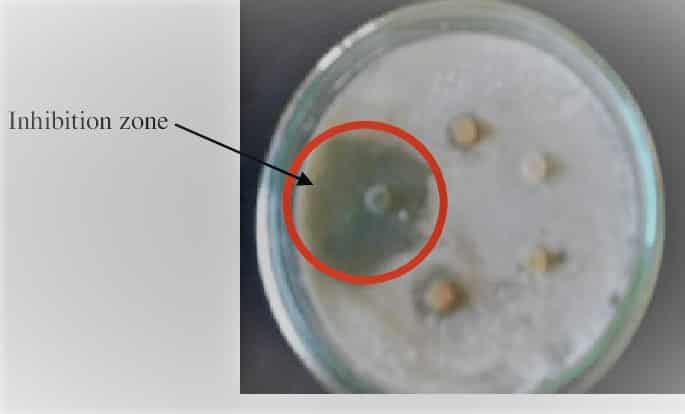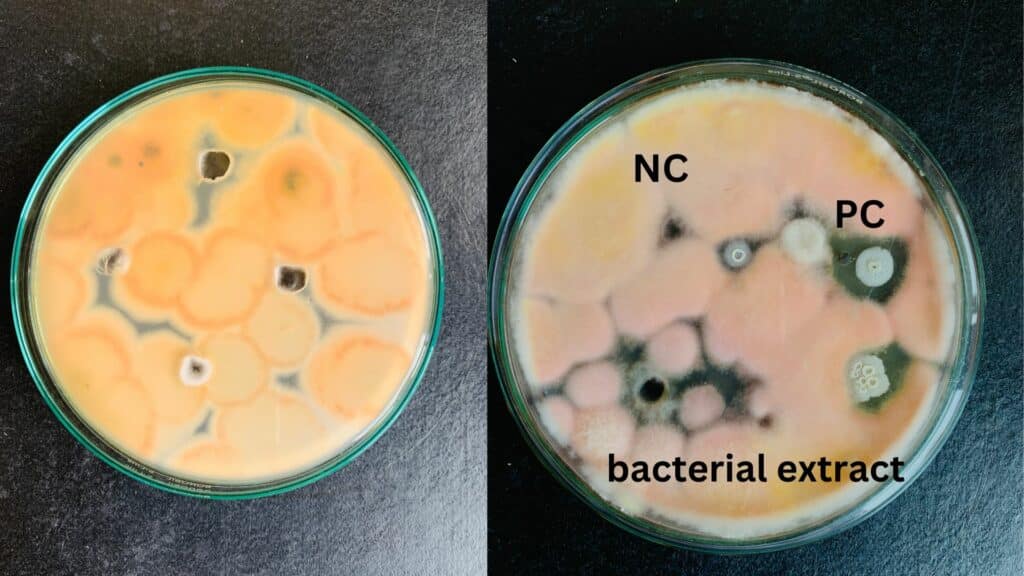Table of Contents
ToggleAntifungal activity is the method of inhibiting fungal pathogens with respect to the extracts. A medicine known as an antifungal agent is one that selectively removes fungal infections from a host while posing the least amount of harm to the host.
Antifungal Definition
A pharmaceutical fungicide or fungistatic called an antifungal medical treatment sometimes referred to as an antimycotic medication is used to treat and prevent mycosis, including athlete’s foot, ringworm, candidiasis (thrush), and dangerous systemic infections such as cryptococcal meningitis. Although most of these medications must be purchased with a prescription from a doctor, others are sold over the counter (OTC). Antifungal resistance is posing an increasing danger to world health.

Common name of antifungal medicine
- clotrimazole (Canesten)
- econazole.
- miconazole.
- terbinafine (Lamisil)
- fluconazole (Diflucan)
- ketoconazole (Daktarin)
- nystatin (Nystan)
- amphotericin.
Just like antibacterial activity, antifungal activity is also similar, in antibacterial activity, it acts against bacterial infection, and antifungal is against fungal pathogens.
Principle of antifungal activity
Both the human pathogen Candida albicans (IC50 = 1.3 g ml1) and human colon cancer cells showed significant antifungal effects. This approach of antimicrobial testing relies on an ongoing gradient of drug concentrations injected into a plastic, non-porous strip. By allowing the antifungal drug to diffuse into an agar plate and allowing elliptical development around the antifungal gradient, it is possible to accurately calculate MIC values.
Protocol of antifungal activity
There are various methods for antifungal activity. One of the simple, easy, efficient methods is Agar well diffusion method:
- First of all, the different media are needed liquid and agar media.
- The different media, Potato dextrose Agar (PDA), and PDB broth are two media used during this process.
- The PDB broth is used to grow pathogenic fungi.
- Just like the antibacterial activity, from the sterile cotton bud, the bud is dipped into the broth and is swapped in the PDA media.
- They are swapped to 60 degrees approx to three times, waiting for a few minutes for drying.
- Now, after drying, the well is made into agar by a 6mm borer, and the extracts, like plant extract, are put into the well.
- Positive control and negative control are also added to the well and are left for a few minutes.
- The plates are kept in a 28-degree incubator and left for 3-5 days.
- After a few days depending on the growth of the fungus, the zone of inhibition is measured.

Composition of PDA media
It is formed of dextrose, often known as glucose and potato infusion. In addition to supporting the luxuriant development of fungi and bacteria, the potato infusion and dextrose as a carbohydrate source are also noted to promote the growth of mold spores and the generation of color in certain dermatophytes.
Preparation of PDA media
For a 1 liter batch of PDA media, 39 grams of powder media are simply mixed with distilled water, autoclaved for 15 minutes at 121 degrees Celsius, and then placed on Petri plates for 24 hours to set.
Preparation of PDB broth
Potatoes that have been coarsely chopped should be boiled for about an hour before filtering through cheesecloth and added water to make a 1000 ml filtrate. To make the agar dissolve, warm the filtrate. Glucose is added before sterilizing the 121degree C autoclave.
The active ingredient in antifungal cream
The most active ingredient present in antifungal cream is clotrimazole. Among other fungal skin diseases (candidiasis), clotrimazole is used to treat athlete’s foot, jock itch, ringworm, and other skin infections. Additionally, pityriasis (tinea versicolor), a fungal illness that causes the skin on the neck, chest, arms, or legs to lighten or darken, is treated with this medicine. An azole antifungal called clotrimazole acts by stopping fungus from proliferating.
Advantages of antifungal activity
Antifungal medicines are used to treat fungal infections, which most commonly affect your skin, hair, and nails. To Treat the fungal infection present in plants leaf, stem examples, fungal infection in tea leaves, tomatoes leaf, etc.
How to test the antifungal activity of plant extracts?
Using the agar-well diffusion technique, the antifungal activity of the plant extract was evaluated against reference fungal strains of Candida albicans and Aspergillus niger at doses of 200, 100, and 50 mg/mL.
References
https://www.webmd.com/drugs/2/drug-94304/antifungal-clotrimazole-topical/details






